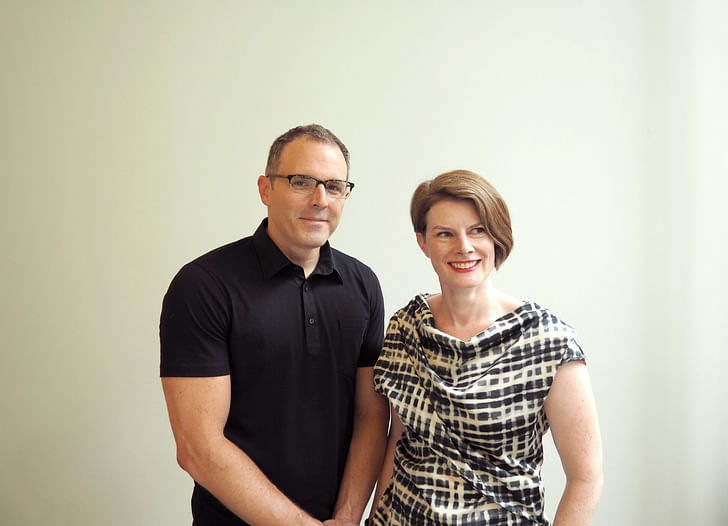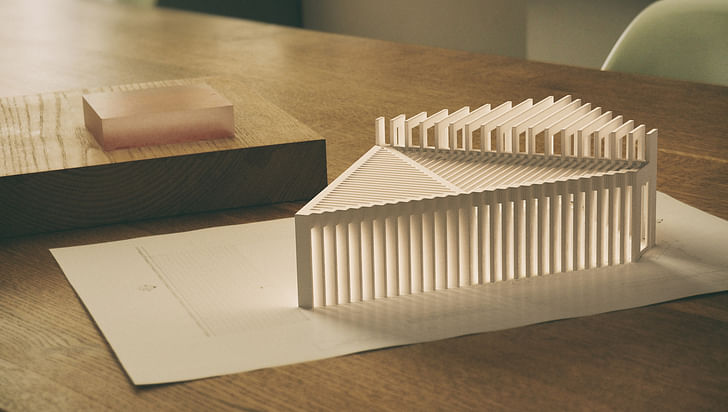

Located in Toronto, the architectural design studio Williamson Williamson was established by husband-and-wife duo, Shane and Betsy Williamson. Since its founding, the firm has been awarded the prestigious 2014 Emerging Architectural Practice Award by the Royal Architectural Institute of Canada and the 2014 Emerging Voices Award by the Architectural League of New York.
For this week's Small Studio Snapshot, we talk with the two about learning to balance design priorities with the realities of construction, working in the city of Toronto, and the growing number of small offices in the city.
How many people are in your practice?
Seven including the two principals. We grow to nine in the summer months.
Why were you originally motivated to start your own practice?
We wanted the autonomy to craft not only the design of the projects, but create the type of studio environment that we wanted to spend our time in. It allows us to pursue formal and research agendas that we incorporate into our work, fold in the research that Shane is doing at the Faculty of Architecture, and have a family.
What type of research is Shane involved in at the University of Toronto?
My current research focuses upon the role of play and cognition in early childhood education through the design of toys and kindergartens. Ongoing research includes investigations in wood construction with the intent of situating digital fabrication in a broader cultural context. This research is largely focused upon wood joinery.
What hurdles have you come across?
In a small practice each project has a profound impact on the studio; mentally, physically, and financially. We have learned to choose our clients and contractors very carefully, and sometimes we still don't get it right. At first, though, income was our biggest hurdle. The move away from a sweat-equity mode of practice to one where clients were willing to pay us for services was the first step. There is no shortage of unfunded or under-funded opportunities via exhibitions, installation, and competitions but this isn’t a viable form of practice for us, if not for the sole reason that we need to keep the lights on and pay our staff.
What was one of your early projects you learned a lot from?
One of our very early installations, Stock Space, was conceived as a subtractive space or a digital grotto, of sorts. We sourced a tremendous amount of EPS foam that we subsequently milled. We learned a lot about static electricity and lived with foam stuck to our clothes and pretty much everything in our apartment for the rest of that year. This marked the downturn of our interest in subtractive strategies.
We love to build because each time we move from the concept and drawing phase to the building phase, we learn exponentially more. In our early work, such as the House in Frogs Hollow, it was learning how to make the right decisions to balance our design priorities with the realities of construction. Those were the hardest decisions and we didn't quite get everything we wanted, but we learned which were the pieces that made the most impact. We had the trust of the client to make these decisions which was the most important thing. In situations where we couldn't build that trust for whatever reason, the projects ended up not getting built which is hard after you have invested so much time and energy into the process.

Is scaling up a goal or would you like to maintain the size of your practice?
In a small office you learn how to do lots of work with a small number of people. As larger projects start to come into the office, we have had to create a road map for how we can scale-up at times when we need the extra hands. We want to stay in the sweet spot where we have larger projects, but don't feel like we have to 'feed the machine' with work we don't want to do.
Can you talk a bit about the city of Toronto and what it is like to run an architectural practice there?
In Toronto, there is a tight community of architects that we have become an integral part of over the years. Since we started our practice, I would say that the number of small offices has grown exponentially which is great for the city. However, it is still very tough for small startups to compete for public work with the large offices, so we represent a community that is innovating on a different scale and taking opportunity wherever we can find it. As in any city, you have to work hard to build your network and establish a professional reputation. Betsy's work with with the group Building Equality in Architecture Toronto is one way that we are establishing an alternate network and paying forward the support we received when we started our practice ten years ago.
There's a growing number of emerging practices in the city. Although this creates a more competitive landscape, it also raises the bar for the architecture community which we support unequivocally. Getting larger public work in the studio is a priority for us but the metrics are against us in the current RFP/RFQ model in the city. Larger offices are going after increasingly smaller projects. Having said that, the two of us have worked hard to cultivate our connections in the profession and in academia and we are making inroads to larger-scale work in the private realm with the intent of better positioning ourselves for public work.
Lastly, what are the benefits of having your own practice? And staying small?
You own your own successes and your own mistakes. When a project comes together and you create a beautiful and enduring building, it is like magic.
No Comments
Block this user
Are you sure you want to block this user and hide all related comments throughout the site?
Archinect
This is your first comment on Archinect. Your comment will be visible once approved.